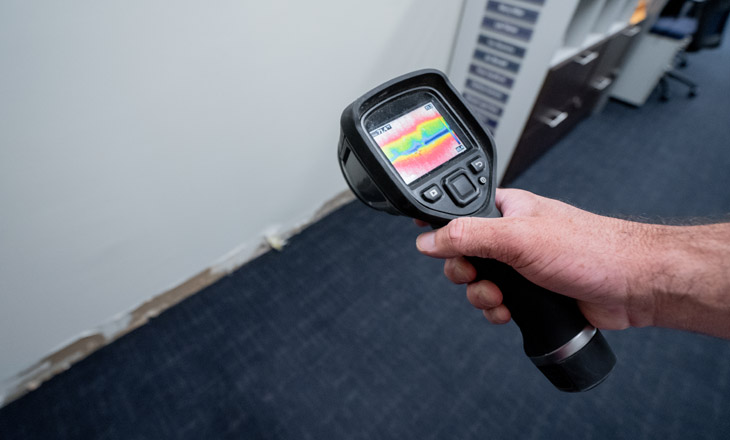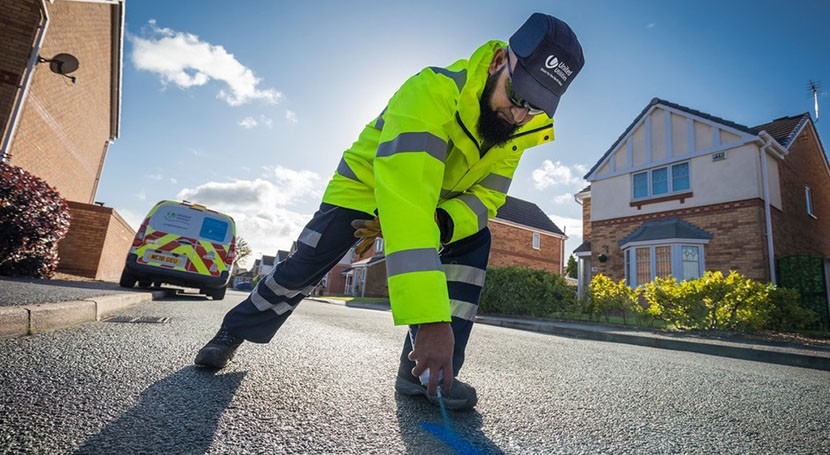Why Timely Water Leak Detection is Necessary for Keeping a Healthy And Balanced Home
Why Timely Water Leak Detection is Necessary for Keeping a Healthy And Balanced Home
Blog Article
Ingenious Solutions for Very Early Discovery of Water Leakages in Buildings and Facilities
As the integrity of buildings and framework is critical, the challenge of very early discovery of water leaks has actually stimulated innovative remedies that guarantee to reinvent the means we secure against potential problems. From advanced leakage detection modern technologies to the deployment of IoT sensing units for real-time surveillance, the landscape of leak prevention is advancing rapidly. Artificial intelligence algorithms use a glimpse right into the future of leak prediction, while thermal imaging provides a non-intrusive approach for pinpointing concealed leakages. Automated water circulation analysis systems are reshaping exactly how leakages are identified and dealt with, leading the means for a proactive method to water leakage discovery. Each of these solutions holds the essential to making certain the reliability and longevity of our developed atmosphere, prompting a shift towards a much more lasting and reliable future.
Advanced Leak Discovery Technologies
Advanced leakage discovery modern technologies, outfitted with innovative sensing units and formulas, play a critical duty in promptly determining and identifying water leaks in various settings. These innovations use a mix of acoustic, thermal, and electromagnetic sensing methods to detect leakages precisely. Acoustic sensing units identify the audio of getting away water, enabling for accurate localization of the leak source. Thermal imaging identifies temperature level modifications triggered by water leakage, giving one more effective approach for leakage identification. Electromagnetic sensing units can determine changes in magnetic fields brought on by water, providing yet another layer of leakage detection ability.

IoT Sensors for Real-Time Tracking
In the world of contemporary water leak detection, the assimilation of IoT sensing units for real-time tracking represents a pivotal advancement in enhancing proactive leakage detection capacities. These sensing units offer continuous tracking of water supply, giving real-time data on water flow rates, pressure variations, and temperature adjustments. By leveraging IoT technology, these sensors can find also the tiniest abnormalities in water use patterns, making it possible for very early identification of prospective leaks prior to they intensify into major problems.
IoT sensors transfer data to a central system, where innovative formulas examine the info and produce notifies or alerts when abnormalities are detected. This real-time surveillance capability allows property owners or center supervisors to promptly deal with leaks, reducing water damage, reducing repair service expenses, and preserving water resources.
Additionally, IoT sensors can be incorporated with structure management systems, enabling automatic actions to identified leaks, such as turning off water valves or triggering pumps to alleviate the influence of leakages. In general, the application of IoT sensing units for real-time tracking substantially enhances the performance and efficiency of water leak detection in buildings and facilities.
Device Knowing Algorithms for Leak Forecast

One trick benefit of using machine understanding for leakage prediction is its ability to continually find out and improve its precision over time. As even more information is accumulated and fed right into the formula, it can fine-tune its forecasts and adapt to altering problems, inevitably raising the reliability of leakage detection systems.
Additionally, equipment discovering formulas can assist in determining refined indicators of leaks that might go undetected by typical tracking techniques. water leak detection. By analyzing complicated data sets in real-time, these formulas can offer very early warnings and informs, permitting punctual treatment and preventive maintenance to mitigate potential water damages and linked expenses
Using Thermal Imaging for Leak Detection
Thermal imaging modern technology supplies an appealing technique for spotting water leakages in different systems and frameworks. By making use of infrared radiation and temperature level variances, thermal imaging cameras can identify covert leakages that are not easily visible to the nude eye.
One of the vital advantages of thermal imaging for leak discovery is its non-intrusive nature. Unlike conventional approaches that might require getting into wall surfaces or floors to locate leaks, thermal imaging permits for non-destructive screening. This not only saves time and reduces costs however likewise minimizes disruption to the building or framework being examined. Additionally, thermal imaging can swiftly scan large areas, giving an extensive introduction of possible leakage sources in a prompt way. On the whole, making use of thermal imaging modern technology enhances the performance and precision of water leak discovery, making it a beneficial device for preserving the honesty of i was reading this buildings and infrastructures.
Automated Water Circulation Analysis Equipments
Exactly how can automated water circulation evaluation systems revolutionize the detection and administration of my sources leaks in different systems and facilities? Automated water flow evaluation systems supply a positive strategy to leak discovery by constantly keeping an eye on water circulation prices and patterns. By establishing baseline information, these systems can promptly determine variances that may indicate a leak, making it possible for timely treatment to avoid comprehensive damages.
These systems make use of sophisticated algorithms to assess real-time data and provide prompt informs when anomalies are discovered, permitting quick action to be taken. Additionally, computerized water flow analysis systems can be incorporated with structure management systems or IoT systems, enhancing overall efficiency and enabling remote tracking abilities.
In addition, the data accumulated by these systems can be made use of for predictive maintenance functions, assisting to determine prospective powerlessness in the facilities before leaks take place. Generally, the implementation of computerized water circulation analysis systems can dramatically improve leak detection and monitoring methods, ultimately causing set you back savings, reduced water wastage, and increased sustainability in structures and infrastructure.

Verdict
In conclusion, the combination of sophisticated leak discovery modern technologies, IoT sensing units, artificial intelligence formulas, thermal imaging, and computerized water flow evaluation systems supplies ingenious options for very early discovery of water leakages in structures and infrastructure. These technologies allow real-time monitoring, forecast of leakages, and effective detection techniques to avoid water damage and wastage. Applying these options can assist in maintaining the stability and sustainability of water systems in numerous settings.
Report this page